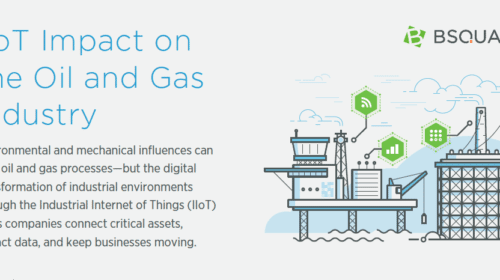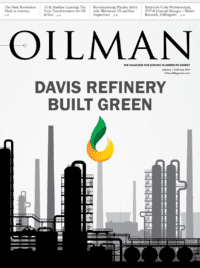The ability to predict the future is a powerful form of knowledge for any business. If you know of an event that could cause harm to your business lies ahead, like equipment failure, you can take steps to address it and avoid negative consequences, like unnecessary costs or downtime. If you know a beneficial event is ahead, such as an increase in demand, you can harness it to increase revenue, customer satisfaction, and more. For these reasons, cases like predictive failure, predictive (or forecasting) demand, and predictive maintenance are quickly gaining popularity in the oil and gas industry. Individually, these IoT-enabled capabilities can pack a strong ROI punch by helping businesses anticipate future events, and take appropriate preemptive measures, using real-time data. When layered together, their benefit potential grows exponentially.
Predicting Pump Failure
Maximizing the uptime of revenue-generating pumps is critical for oil refineries, which has made predictive failure one of the more desirable predictive capabilities. Failures can cost thousands of dollars or more in unplanned downtime and present the additional threat of expensive collateral damage. Additionally, false positive alerts from equipment sensors pose an altogether different problem by straining service resources and driving up expenses when technicians are deployed to a site to learn that no problem exists. Fortunately, sophisticated data analytics make it possible to predict and resolve these problems before they occur, avoiding unplanned downtime and reducing false positives.
Typically, there is no backup option when an oil pump fails at an oil refinery, so the facility is forced into an unscheduled shutdown. These sorts of environments are generally highly utilized – often running nonstop, 24/7. Such elevated levels of plant activity mean that any production time lost to down equipment is gone forever, due to a shortage of extra capacity. And that’s in addition to the outsized costs associated with emergency repairs. Failures of this nature can also introduce contaminants into the production pipeline, which run the risk of corrupting product quality and damaging equipment downstream. Furthermore, these sorts of breakdowns come with the ever-present danger of causing a line breach, which can carry a steep cleanup price tag all on its own.
With data insights into the pump’s health, as well as like assets across a population, the refinery could have caught the warning signs of the upcoming failure. Knowing an asset is headed for trouble, management could have proactively scheduled a repair to minimize the impact on production and prevent unfavorable side effects, such as unnecessary cleanup costs and equipment damages.
Forecasting Demand
Predictive (or forecasting) demand is another capability that offers excellent benefit potential to the oil and gas industry. IoT can help refineries better gauge demand in the oil supply chain. Basic historical analysis has been used to forecast peak seasons for oil demand, but without incorporating data from device sensors, it’s difficult to pinpoint the optimal oil production for any given amount of time. This can lead to wasted excess and unnecessary costs. Using the IoT to harness real-time data from edge devices – such as pumps – enables oil companies to better calculate future demand.
That said, the data needed to project demand extends beyond just the information coming from a device. It’s easy to focus on device data because that’s the new variable, but there are more pieces to the puzzle. By incorporating as many data points that influence demand as possible – such as enterprise systems and external variables – companies can enhance prediction accuracy.
Anticipating Maintenance Needs
Predictive maintenance is another IoT use case with exciting potential applications across the oil and gas sector. Traditional methods of equipment maintenance are generally reactive – servicing equipment once it fails – or preventative based on static time intervals or amount of use. Reactive maintenance is often expensive, due to compounding costs associated with unplanned downtime and emergency repairs. Preventative measures carry the risk of under-or over-servicing equipment, which can inflate maintenance costs and reduce asset longevity.
Condition-based maintenance (CBM) is an important step in the right direction, as it uses real-time operational data, as well as environmental and historical information, to identify when service is truly needed based on actual device performance. While this does help oil and gas companies improve maintenance and repair processes across all of their connected equipment, CBM is still reactive in that it’s a response to current conditions. Predictive maintenance takes CBM and makes it proactive by flagging service needs in advance, so that companies can take action before those needs arise. In addition to significantly improving asset reliability and longevity, this ability to better plan maintenance can significantly lower service costs and help defer capital expenditures.
Effective Predictive Analytics Begins with the Right Data
Predictive analytics is transforming many of today’s connected industrial organizations by proactively identifying asset efficiency, performance issues and other key factors before they impact operations. However, even with the most advanced technology, the ability to carry out any sort of predictive analysis hinges primarily on having the right dataset. This is why it’s critical to perform a thorough review of what data you have vs. what’s required before beginning any initiative. And it’s equally important to keep in mind that data important to a predictive project isn’t limited to production information.
Companies experiencing the most predictive success incorporate additional variables – such as enterprise system data and public data sources (e.g., weather, geospatial, etc.) – with device data. This sort of supplementary information helps build context to create a more complete picture of what’s actually happening with a device. Whether it’s a wet vs. dry environment or a cold vs. warm climate, there are countless external factors that can affect different assets in a variety of ways, with varying degrees of severity. In fact, this secondary information is significant enough on its own that, in some cases, it can provide a general sense of what’s wrong with a device or when an error is likely to occur.
That said, it takes an IoT solution that integrates real-time device data with the relevant additional data sources to pinpoint root causes and predict failures with accuracy. Finally, remember that while all forms of predictive analytics offer great value to an oil and gas operation, starting with the predictive capability that shows the most potential will lead to the greatest profitability or cost reduction.








